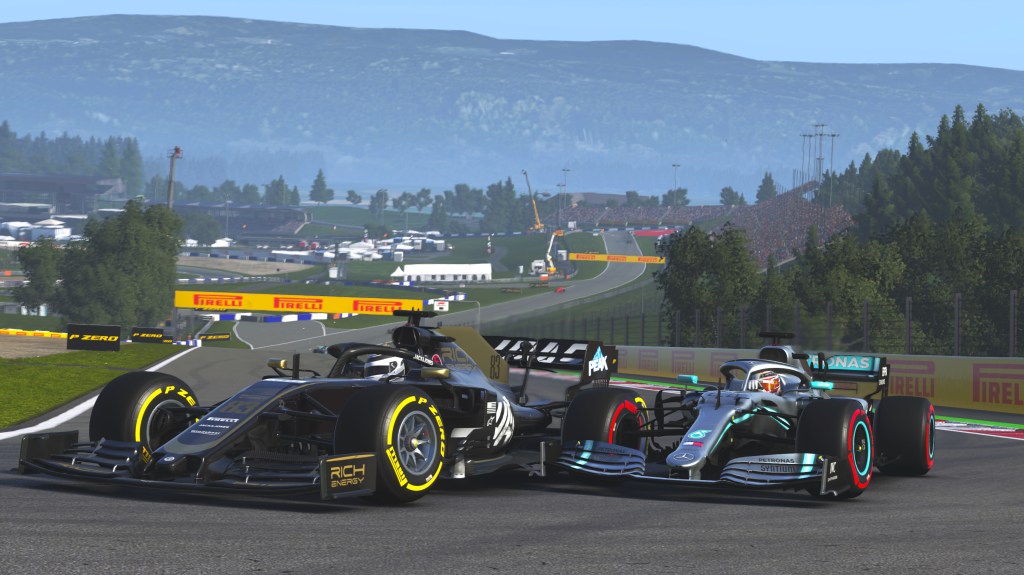All sports love to pay tribute to the idea of the self-effacing “team player,” but if you look at the ranks for Formula 1’s most successful drivers, a lot of them had mixed reputations. Ayrton Senna, Alain Prost, Michael Schumacher, and Fernando Alonso were as easily regarded as unscrupulous villains as dominant talents. Meanwhile, “company men” like Rubens Barrichello and Felipe Massa are mostly remembered for getting pushed around by their more famous teammates. F1 may be a team sport, but there can only be one champion, and nobody has gotten there more than once by being polite about it.
That never quite came through in the Codemasters F1 series, at least until this year. One of the biggest changes in F1 2019, and something I’m still struggling to adjust to, is how much more assertive its AI drivers are—and how that AI has exposed weaknesses in my own skillset. For years I’ve been able to abuse certain traits and behaviors to make my job just a little easier on the track, and to feel a little more like a Lewis Hamilton-level talent rather than the garbage-tier “gentleman racer” I’d almost certainly be if anyone ever let me near an actual race car.
Videos by VICE
Even as the AI in Codemasters’ F1 series has made major strides in recent years, becoming less prone to sticking to the racing line like glue and more reactive to what was happening around it, AI drivers seemed to have one prime directive: don’t hit anyone. That’s not a bad principle, of course. Open-wheel race cars can’t trade paint like NASCARs or endurance cars can and, perhaps even more importantly, a collision-prone AI can be infuriating to race against even to players who are themselves way, way more clumsy than their computerized adversaries.
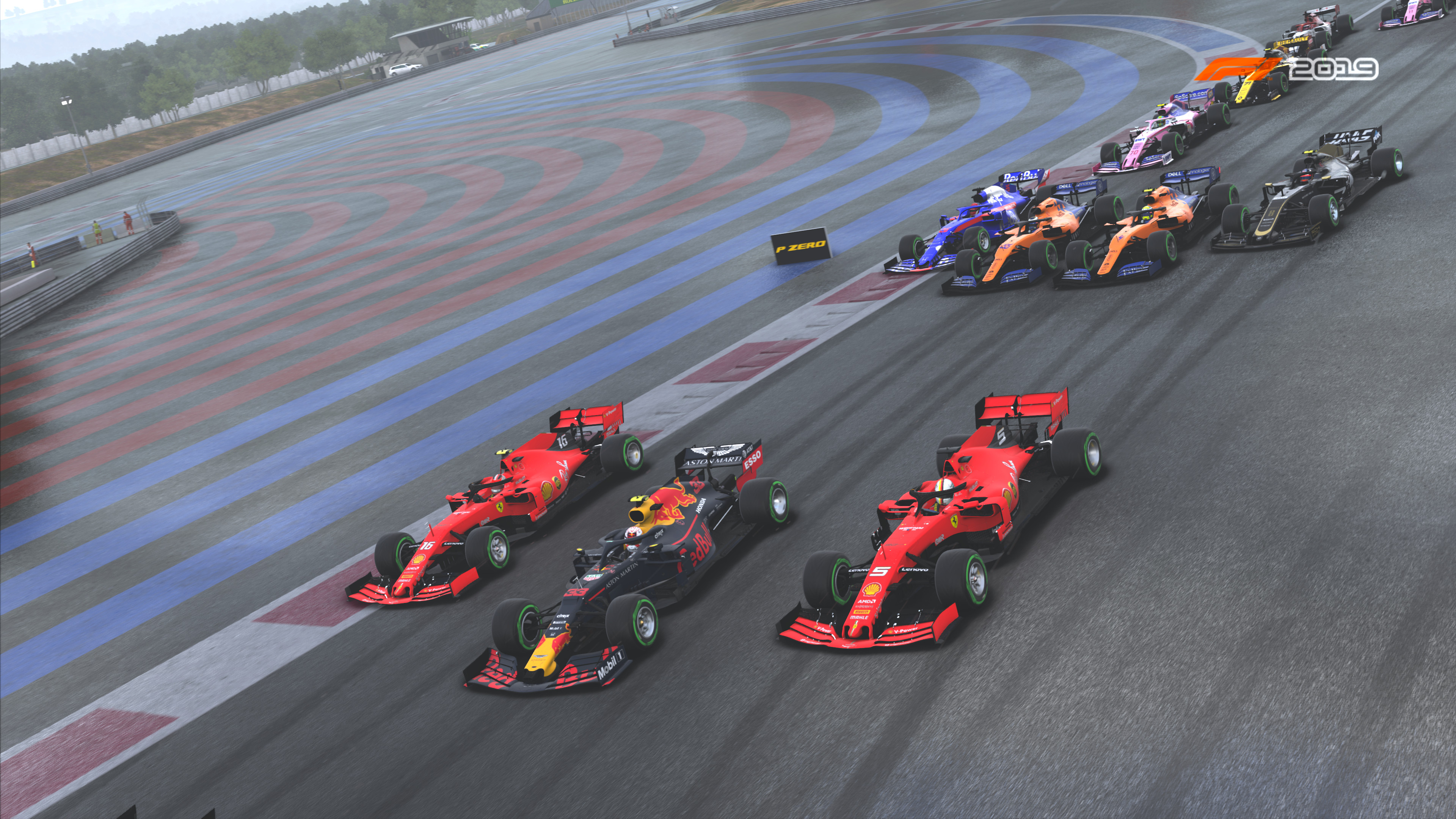
The trouble is that once you realize that the AI is programmed to swerve first every time, it’s hard not to play chicken with it. In F1 2018, my signature move was to take the inside line on a corner, then take the widest possible exit to effectively force the other driver to slam on their brakes or run off the track. It worked just about every time, and I felt like an overtaking genius. Now, in F1 2019, everything has changed: the AI won’t just contest a corner all the way through, but will happily slash one of your tires with its front wing, or chop off your car’s nose by cutting right in front of you.
But there’s something else that’s striking about this shift: it parallels a real-world sport that’s become far, far more combative than at just about any period I can remember. The last two Formula 1 seasons have featured far more sideswiping and wheel-banging than ever, and this year has been marked by more aggressive interventions by the sport’s stewards (basically the referees) as they attempt to adjudicate what is good, fair racing versus driving like an asshole. That’s been a difficult and controversial effort, especially since a lot of F1’s most successful drivers got that way by driving like an asshole.
Asif Kapadia’s award-winning documentary on Ayrton Senna was basically an ode to the colossal egos, talent, and unscrupulousness of Senna and his main rival Alain Prost. In a move that remains shockingly audacious even today, Senna clinched the 1990 title by intentionally smashing Prost’s car at the start of the race.
You don’t see those extremes anymore, but we now have a new generation of F1 drivers who have taken a broader lesson to heart: one of the surest ways to become an also-ran in Formula 1 is to be identified as someone who can be intimidated.
I asked Codemasters F1 director Lee Mather about what changed in F1 2019 to make it feel so much more vicious than previous years’ versions, and how Codemasters tries to mimic the complicated and sometimes inscrutable judgments of F1’s stewards.
Mather confirmed that the AI’s “wheel-to-wheel” behavior was the main area of improvement in F1 2019, trying to give the AI drivers a more life-like character and enable the kinds of “snap decisions” that real F1 drivers will make for shame or glory.
“Two of the most significant areas which relate to this are in blocking techniques and overtaking,” Mather said. “One of the most noticeable changes is in how the AI won’t be scared off the racing line, if a real driver would cut your nose off to take the line, the AI will do the same. They also block very realistically on straights and in braking zones, often placing the car in a position which really makes the player have to think about how they set-up and overtake.”
In previous years, I’m not sure how faithful this “elbows-out” approach to racing would have felt to the real-life sport. It’s hard to judge, in part because after a long period of fairly intense stratification between rich, successful teams and poorer, struggling teams, we are finally starting to see a bit more convergence among different cars at different points in the racing field. But I think there’s also a generational element to what’s happening in F1 that has changed the nature of the sport.
Starting with the arrival of Max Verstappen in F1 in 2015 as the youngest-ever driver, F1 has seen the start of a significant generational turnover. While there are still a lot of veterans like Alfa Romeo’s 39 year-old Kimi Raikonnen, the field now features a lot of promising young drivers like Ferrari’s 21 year-old Charles Leclerc, Williams’ 21 year-old George Russell, and McLaren’s 19-year-old Lando Norris. In general, this younger generation of drivers is more assertive and combative than just about any racing F1 cohort that I’ve ever seen. Taken together, they’ve changed what we expect from races, and left the sport’s officials struggling to figure out what the boundaries should be. It’s also made F1 racing looking a lot more like a racing video game.
As an example of how this dynamic is playing out, look at this escalation that happened earlier this summer as Leclerc and Verstappen emerged as rivals to one another. At the Austrian Grand Prix in late June, Verstappen fought hard to pass Leclerc’s Ferrari, making an attempt in the same corner on two consecutive laps. The first time, he and Leclerc emerged side-by-side and Leclerc managed to hold onto his lead. The second time, Verstappen pushed Leclerc off the track by denying him space through the corner (only real gamers will know this one).
Leclerc and Ferrari immediately appealed to the stewards, arguing the move crossed a line. Drivers are supposed to leave each other room to race, and so even though “closing the door” on another driver is a time-honored passing technique, it’s something that Leclerc wanted the increasingly interventionist F1 officials to look at. They did, and they decided the move was in-bounds.
Leclerc then made an interesting remark: “Looking back, I’m happy we can now race like this,” he said. “As drivers, we always try to be as close as the rules limit us, so I will definitely change a little bit and adjust a little bit my aggression.”
What that meant became clear a couple weeks later in Britain, when he fought a truly vicious running-battle with Verstappen, pushing the young Dutch driver wide repeatedly and even slicing across his front as they headed into a corner.
But the sport’s officials loom large in all of this, because they have been at pains to try and enforce standards and fairness throughout this season. When Leclerc said he was adjusting his aggression, he was also letting the stewards know that with their inaction, they had sent a message.
The stewards’ actions have been controversial this year. Arguably they’ve hurt Ferrari twice, first by penalizing Sebastian Vettel and knocking him out of the lead at the Canadian Grand Prix in early June, and then by refusing to punish Verstappen when he pushed Leclerc off the track. They also slapped Sergio Perez with a penalty for going off-track and emerging in front of the cars he had been racing against, despite the fact that he had tried to follow the proper re-entry procedures. Formula 1, then, is going through its own version of what the NFL is facing in football around “roughing the passer” calls and “pass interference” calls. Its officials are legislating action that has always been a part of the sport, and which often unfolds in the blink of an eye.
F1 2019 mirrors this to a surprising degree. You will constantly receive messages that the stewards are investing one incident or another, and if you drive on the edge of permissibility, you will likewise receive warnings or penalties. But it’s still surprising to see F1 2019 lean so far into this, given how much of what the stewards do in the real-life sport depends on a series of debatable judgment calls.
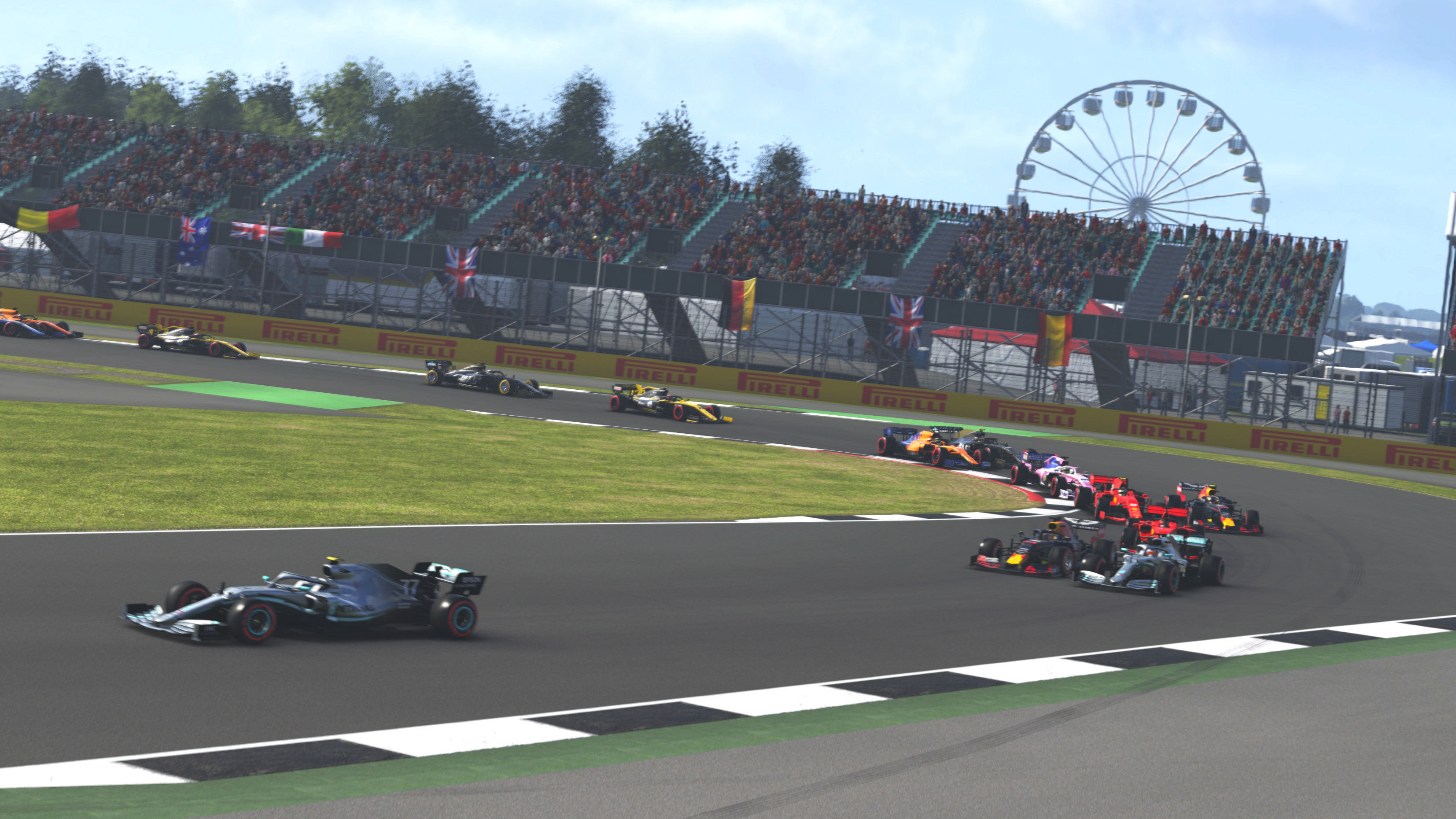
“Working out penalties is one of the most complicated things we deal with in F1, and as you’ll have seen in the real sport, it’s never easy,” Mather admitted. “Even with all of the data available to them, and a group of professionals, it’s still a complicated process to determine blame or on-track gain in the real world, so we employ multiple systems to allow the game to make the most educated decision possible.”
One of the more unexpected things about this system is that the game will often take some time to reach a conclusion about what happened. I’d always assumed the entire delay between “investigation” and punishment was faked, just to make it feel more life-like. But Mather describes the F1 2019 system as being more holistic, and more watchful of context.
“The game obviously assesses what the gain/loss is to any drivers involved in an incident, be that someone being spun out, or losing or gaining a place when a car is off the track,” he said. “It also takes a period of time to assess if a gain has been made further into the lap. It could be that a small corner cut shows no reduction in lap time, or even a loss, but the change to the line could see a gain being made post incident. The game has to track this, while also being aware that other incidents could occur during that window, as well as things such as pit stops, puncture or intervention from other drivers.”
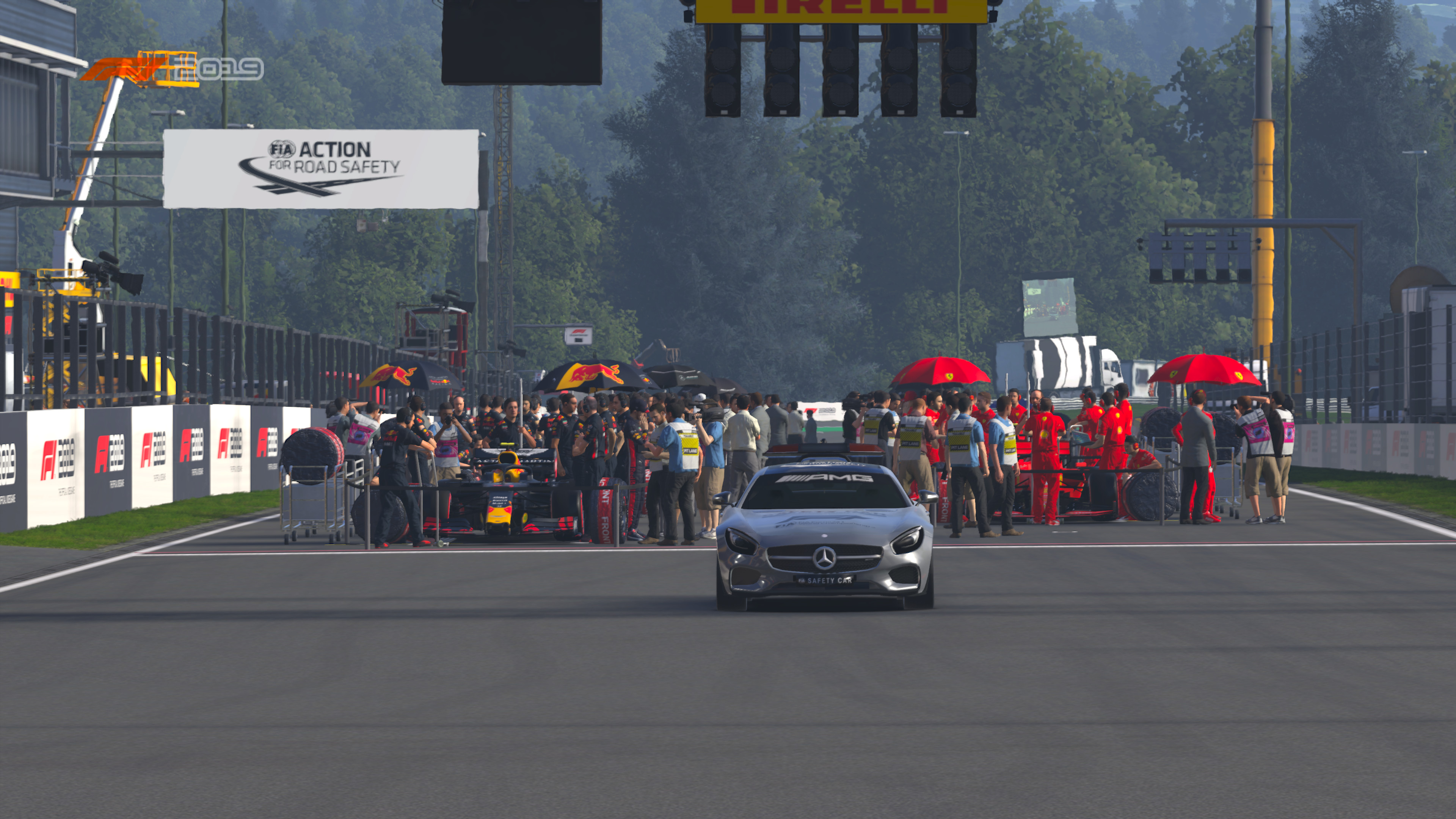
Then there are the drivers themselves. I’m not sure if I’ve identified distinct personalities or traits among the different AI drivers in F1 2019, but taken as a collective, the AI drivers do behave much more like their real-life counterparts. I asked Mather about the degree to which AI drivers are customized, and the answer was mixed. They are all built from a generic template, he explained.
“First up, we build what’s termed a dev 1.0 driver,” he said. “This is the ultimate pace with everything set-up to be the best it possibly can be. With this driver, all AI training is carried out, and the primary consideration is ultimate pace. This is where the level design team tune the base AI to be as fast and accurate as it can be, based on the ideal racing line.”
Personally, my suspicion is that in much earlier editions of the game, the “1.0 driver” was much closer to being the only driver you encountered on-track, where they tended to exhibit a lot of similar behavior and tendencies and only became particularly competitive when challenged by a player. Now, they scrap with each other all the time (which Mather says was a priority), and their clashes showcase the different styles and strengths that Codemasters projected onto them.
“We don’t do anything in particular to force duels or close rivalries,” he said, “that comes naturally out of the statistics of the driver and the car they race. Drivers in similar cars will always be close on track, as the car is a massively strong factor in performance, but how they achieve their lap times and how they race wheel to wheel or under pressure is something which we set individually for each driver. At a high level, each driver has a throttle skill, braking skill, wheel-to-wheel confidence, wet weather ability, how they react under pressure and cornering ability set. There are far more variables than that, but those are some of the key ones which create an individual driving style.”
While I’m not sure individual styles are particularly pronounced in F1 2019 (except for the fictional Devon Butler, whose “dirtbag slider” appears to be set at the game’s maximum), the collective effect is a field of virtual drivers who are nastier and riskier than they’ve ever been throughout Codemasters’ series. In part this could be viewed purely as progress within the context of Codemasters’ own evolution of these games, but I think they also reflect something that’s fundamentally changed within the sport.
Today we simply see a different style of racing than we’ve generally seen in Formula 1 since the 90s, and I suspect there are a few reasons for this. First, a lot of these young drivers grew up in a post-Michael Schumacher world. If Michael Schumacher remains the winningest F1 driver in history (though his records are teetering before Lewis Hamilton’s relentless perfection), he also typified a kind of ruthlessness that many of his contemporaries and especially his teammates were unable to match. Schumacher was a great driver and enjoyed many of the best F1 cars of his era, but he also maintained a psychological edge by making sure everyone knew that he was willing to put someone into a wall if it meant getting ahead. F1 drivers of the 90s and early 2000s skewed toward team-oriented, technical perfectionism and few of them could meet Schumacher on his terms.
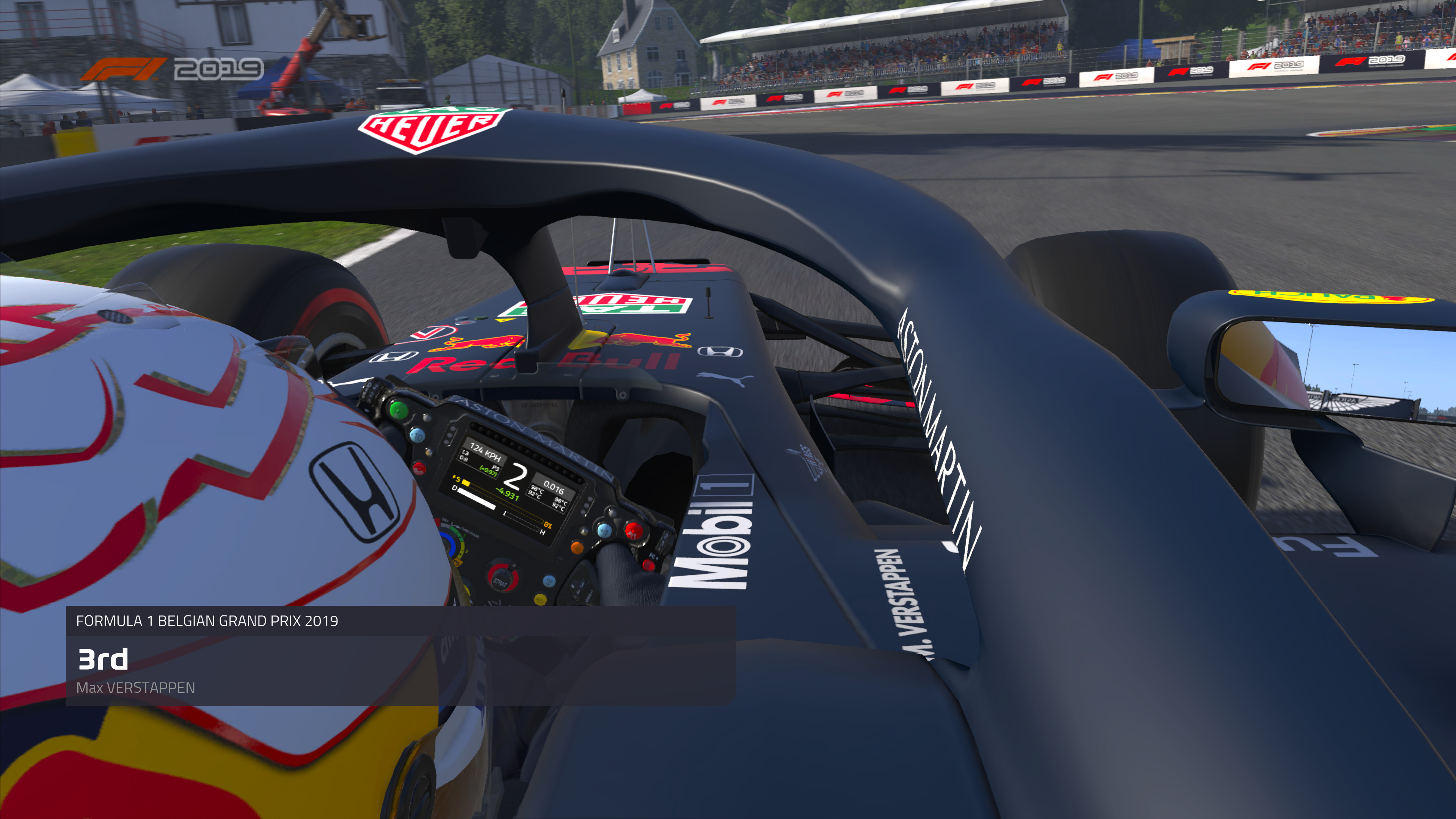
The lesson of those years, however, was that allowing someone to have that psychological edge would eventually cost you victories. When Max Verstappen arrived in Formula 1, he quickly racked up a reputation as being reckless and overly aggressive (somewhat fairly). But while other drivers, including Lewis Hamilton, admitted to being nervous to race around Verstappen, Vertappen’s own contemporaries exhibited little such fear. Many of them raced together in development racing series, and have been familiar with each other’s tactics since they were kids. Those battles have been rejoined in F1.
It’s also worth pointing out that this generation of F1 drivers plays video games. A lot of video games. This is a shift because while the youth bias in F1 has meant that a lot of past drivers have been gamers (Jacques Villeneuve annoyed his team by playing Dark Age of Camelot during his off-hours, even during race weekends), there has never been a cohort of drivers that play so many racing games together. Lando Norris streams on Twitch, and recently won a 24-hour race in subscription-based racing sim iRacing alongside his iRacing teammate Max Verstappen. Previous generations of F1 drivers may have done a fair amount of work in professional-grade simulators at their team headquarters, but that was often for solo practice and engineering purposes. They wouldn’t go head-to-head with each other unless they got into a duel during a real race. Many drivers in this new generation are testing their limits and honing their overtaking tactics all the time.
Among drivers shaped by intense youth competition with their peers, who belong to a culture that plays a lot of video games, it was perhaps inevitable that one day we’d see a version of Formula 1 racing that resembled a video games, and vice versa. For the moment, both games and reality have been enriched by the crossover.
